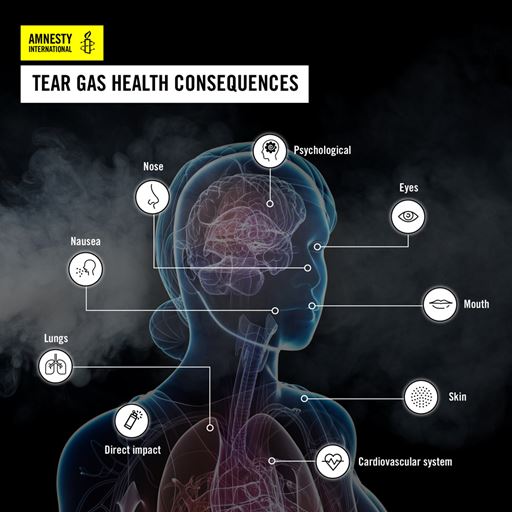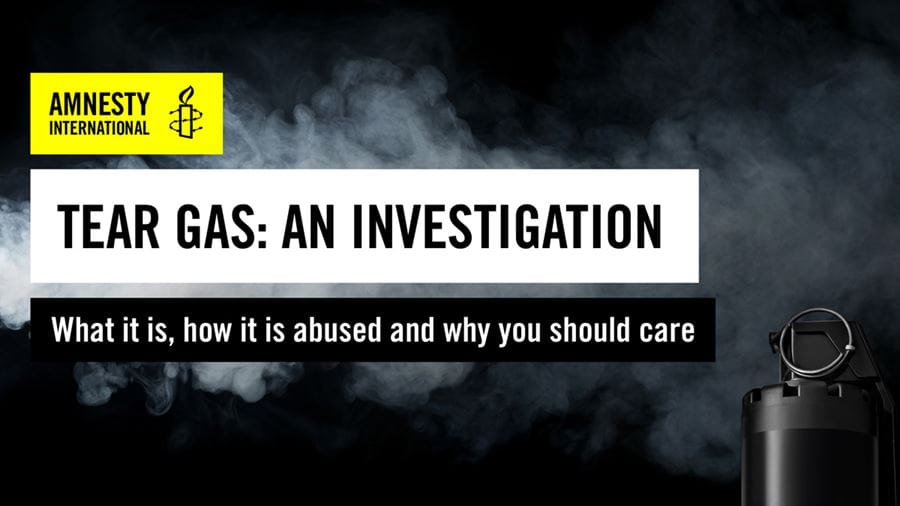Tear gas: staff and students help Amnesty create new platform
-
Date
Fri 12 Jun 20

With public protests making headlines around the world, Essex staff and students have contributed to a new interactive platform from Amnesty International, documenting police use of tear gas.

Further evidence of our Human Rights Centre’s leading position in the use of digital verification techniques for human rights investigations comes today, in the form of a new web platform from Amnesty International.
Tear Gas: an investigation takes a comprehensive look at tear gas as a policing tool – its use as governed by international and international humanitarian law; the potential health effects on those present; and the responsibilities placed on law enforcement and manufacturers when things go wrong.
Our Digital Verification Unit (DVU), based at the Human Rights Centre Clinic, has been working with Amnesty since 2016. Students within Essex DVU are trained to use open source investigation techniques to verify evidence of alleged human rights violations.
Dr Daragh Murray, who heads up the Digital Verification Unit, said: “Under human rights law, tear gas, although classed as a less lethal weapon, should only be used in circumstances where the use of lethal force is permissible. This platform demonstrates that, around the world, examples exist of tear gas being used despite this threshold not being met. This trend has to be challenged head on.’
Amnesty International’s Crisis Evidence Lab verified close to 500 videos – content posted to platforms including Facebook, YouTube and Twitter - and highlighted almost 80 events where tear gas has been misused, confirming the location, date, and validity. This analysis was carried out by Amnesty’s Digital Verification Corps – a network of students at six global universities, including Essex.
Five Essex graduates - Matteo Bassetti, Adair McWilliams, Valentine Hambye, Esme Marshall and Mitch Paquette – contributed to this work during their time at Essex.
Esme Marshall, now the DVU’s Project Manager, said: “This project required our team to geolocate and verify instances of tear gas use in occupied Palestine, as well as to consider the legality of the use of tear gas in each situation. What we found was often shocking; we verified footage of tear gas being deployed above protestors by drones, and canisters shot directly at journalists and medical volunteers by Israeli soldiers.”
Mitch Paquette, who now works at Amnesty International, also contributed in his new role, directing some of the featured video content.
The new platform also features video interviews with two Essex experts.
Graham Dossett, a Visiting Fellow at our Human Rights Centre and an expert on policing and human rights, explains what police must consider before using tear gas.
Acknowledging the important role of tear gas, CS gas and pepper spray for police around the world, he argues that the use must be necessary and proportional; officers must ensure crowds can disperse safely, before using tear gas; and police should always take account of the composition of the crowd – are the protestors likely to include, for example, innocent bystanders, children or someone with a vulnerability or pre-existing health condition?
While described as a ‘less lethal’ approach, the website argues that tear gas carries a number of potential health consequences, and its use has led to deaths. A particular risk arises when tear gas canisters strike protestors. For this reason, Graham Dossett argues, police must only fire tear gas canisters if they can ensure they fall short of the protestors and are not deliberately aimed at striking them. The website contains video evidence suggesting this is not always the case.
In another video, Dr Tara Van Ho, an expert on business and human rights, addresses the role of tear gas manufacturers. Protestors may be able to make claims against these companies if they fail to ensure their clients know how to use the product, or continue to supply them when evidence of persistent misuse exists.
Amnesty argue that, “despite serious human rights concerns and guidance issued recently by the United Nations, the design, manufacture of, and trade in tear gas remain poorly regulated.”
In addition to its work with Amnesty International, Essex DVU has contributed to United Nations investigations, and has verified evidence on a range of issues, from alleged war crimes to environmental damage.
Last year, the unit was recognised for its role in Amnesty’s Digital Verification Corps, specifically its work verifying claims that the US-led Coalition engaged in indiscriminate bombing of the Syrian city of Raqqa. Amnesty DVC, a partnership with six universities, was named International Collaboration of the Year at the Times Higher Education Awards.



